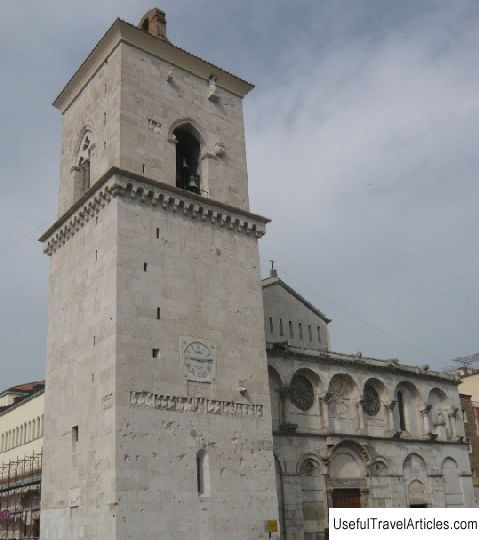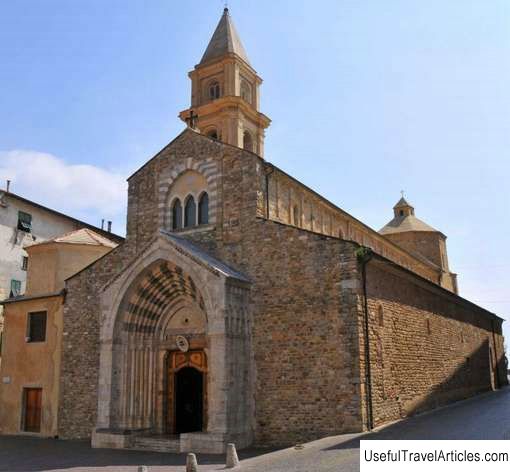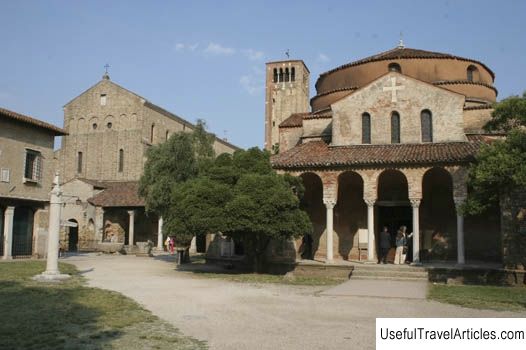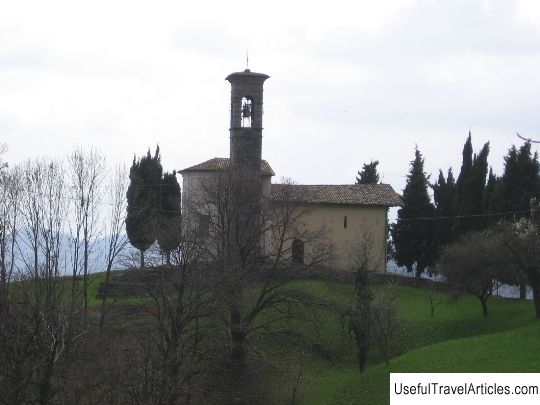Cathedral of Santa Maria Assunta (Cattedrale di Santa Maria Assunta) description and photos - Italy: Aosta
Rating: 8,9/10 (545 votes) 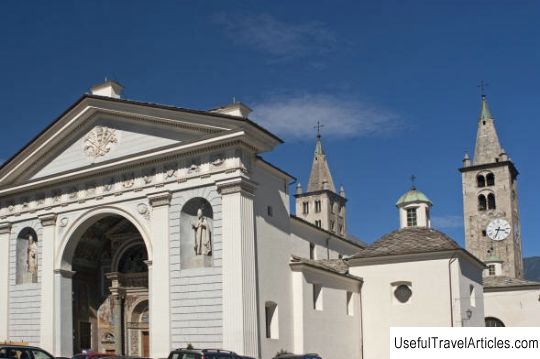
Cathedral of Santa Maria Assunta (Cattedrale di Santa Maria Assunta) description and photos - Italy: Aosta. Detailed information about the attraction. Description, photographs and a map showing the nearest significant objects. The title in English is Cattedrale di Santa Maria Assunta. Photo and descriptionThe Cathedral of Santa Maria Assunta is the main Roman Catholic church in Aosta. The place where the city square Piazza Giovanni XXIII is today stretched, was once the southern part of the Roman forum during the existence of the colony of Augusta Pretoria. Even after the fall of the Roman Empire and the decline of the colony, this place has not lost its primary importance in the life of the townspeople. It was here, to the west of the covered gallery - Cryptoportica, that the first Christian building of Aosta was erected at the end of the 4th century. It was an impressive building with a single nave ending in an apse, a baptistery to the west and various rooms, one of which was used as a second baptistery. The facade of the cathedral was located a few meters from the eastern wing of the Cryptoporticus and was actually connected to it. The entire complex, to which several rooms were later added, was used for several centuries as the residence of the bishop and the clergy, and its appearance did not undergo significant changes until the late Middle Ages. The invaluable cycle of frescoes discovered during archaeological work in the attic of the church also dates back to the 11th century - thanks to these frescoes, as well as the frescoes in the church of Sant'Orso, Aosta was considered the center of Ottoian art in Europe. In the second half of the 11th century, the western part of the cathedral was completely rebuilt - then it consisted of two towers and an overhanging central apse. In the 13th century, two of the five original apses were demolished and replaced with a covered gallery and a circular corridor around the choir. Between the 15th and 16th centuries, the cathedral was decorated with various works of art on the initiative of the then bishop. In the upper choir, decorated with a wooden crucifix, two rows of carved seats appeared, and the floor was paved with mosaics. The main baroque altar of the Cathedral of Santa Maria Assunta is made of black marble with colored splashes. Two staircases lead from the choir down to the 11th century crypt with small medieval columns. The current facade of the cathedral consists of two different parts: the atrium dates from the 16th century, and the neoclassical pediment was erected in 1848. The atrium is decorated with terracotta figurines and frescoes. Next to the church, on the north side, there is a cloister - a covered gallery. It was built in 1460 on the site of an older one and is notable for the fact that various materials were used to create it, - gray bardillo stone for pilasters, crystalline limestone for capitals and sandstone for arches and cladding. In the center there is a Romanesque column with Corinthian capitals. In 1985, a museum was opened in the cathedral, introducing visitors to the local art of the 13-18th centuries.        We also recommend reading Oltremare Theme Park description and photos - Italy: Riccione Topic: Cathedral of Santa Maria Assunta (Cattedrale di Santa Maria Assunta) description and photos - Italy: Aosta. |
